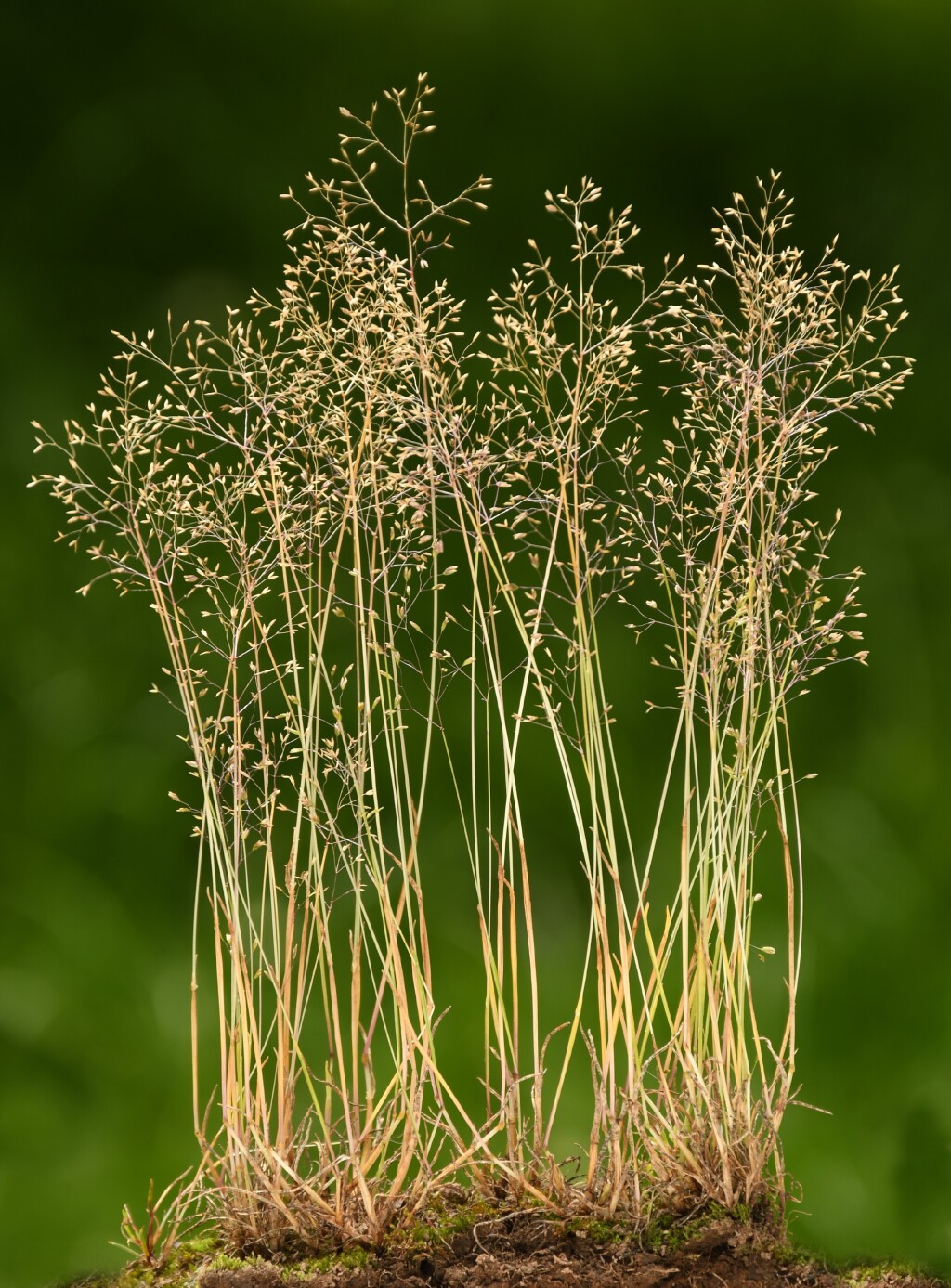Molineriella minuta
(L.) Rouy Small Hair-grassCulms erect 4–12 cm high, smooth, shining. Leaves tufted, glabrous; blade flat or folded, to 5 cm long and 2 mm wide, usually much shorter than culm; ligule membranous, truncate or rounded at apex, 1–2 mm long. Inflorescence an open, broadly ovoid panicle to 7 cm long and 5 cm wide, with spreading capillary branches. Glumes subequal, narrowly ovate, 1–1.5 mm long, smooth, shining, purplish; lemma narrowly ovate, equal to or shortly exceeding glumes, truncate, shallowly notched or erose at apex, sparsely and minutely scabrous along the veins, wholly glabrous or with a few minute hairs at the base; palea oblong, slightly shorter than lemma. Flowers Aug.–Oct.
LoM, MuM, Wim, VVP, VRiv, MuF, GipP, Gold, CVU, GGr, DunT, NIS, HSF, HNF. Also naturalised in WA, SA, NSW. Occurs on sand, tolerating rather saline conditions, but generally not coastal.
Probably overlooked because of its small size and similarity to other dryland annual species and perhaps more widespread than records suggest. Tutin (1980) describes Molineriella minuta as having lemmas with basal hairs c. two-thirds as long as the lemma. This feature has not been observed on any Victorian specimens.
Walsh, N.G. (1994). Poaceae. In: Walsh, N.G.; Entwisle, T.J., Flora of Victoria Vol. 2, Ferns and Allied Plants, Conifers and Monocotyledons, pp. 356–627. Inkata Press, Melbourne.
 Spinning
Spinning


